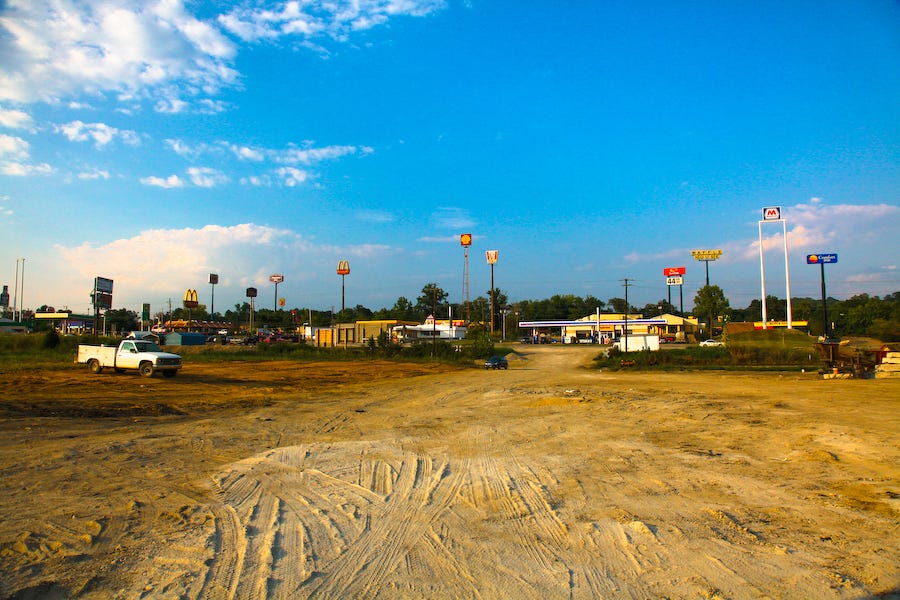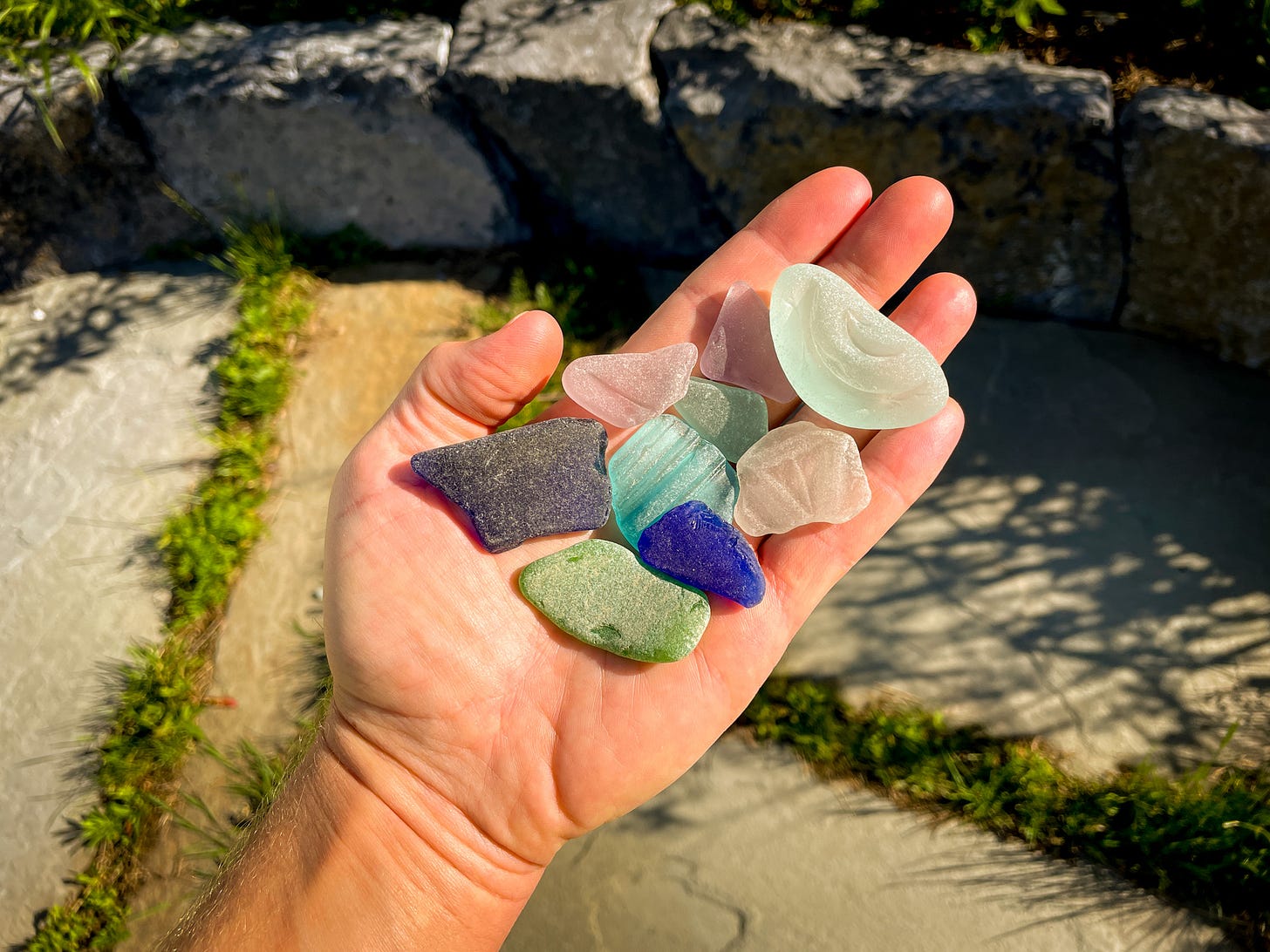Welcome to this nineteenth reflection on In Fragments — this week exploring See Glass (New Food), a ritual to honor the primordial lake with a collection of broken fired mirrors:
If there is a universal law to the cosmos, perhaps it has to do with balance. We find this understanding in many human cultures — from ancient Egypt (with its famous Golden Rule), to traditional China (with its Taoist Yin-Yang and system of internal medicine), to the various Dharmic religions (with their embodied yogas), to countless indigenous cultures around the world. For example, the Q’ero people of Peru practice a philosophy known as Ayni — the wise embrace of reciprocity as a way of preserving the balance between humans, nature, and the universe. In our western science, we encode a version of this understanding in our first law of thermodynamics, which tells us that energy can neither be created nor destroyed, but only transformed. If you want to take something, you must give something in return. This exchange of energy is the essence of aliveness — the “gift exchange” of life.
What is the best way to pass along a gift? Yes, you can hand off a gift just as you found it (the philosophy of “leave no trace”). But really to honor a gift, you need to work with it to improve it, so that what you pass on in the end is something more valuable than what you received (the philosophy of “leave it better than you found it”). The first philosophy is that of the ghost; the second is that of the healer.
Despite the ravages of industrial civilization (some of which were partly set into motion by my ancestors through their work with railroads, sugar, and oil), I believe we need not see ourselves as a cancer on the living earth (a view that seems endemic to the mainstream environmental movement with its culture of “conservation”). Given the right philosophy and education, I believe that respectful co-creation between humans and nature is possible, though it’s certainly rare in our current civilization, as any drive through the horrors of strip-mall America makes all too apparent.
The potential for wise co-creation with nature is well expressed in traditional cultures around the world, such as the villages of rural Japan, the hill towns of southern Italy, or the countrysides of England and Ireland. When we see such places, something deep within us awakens. They remind us that other ways of living on the earth are possible — that something in our current philosophy is way out of balance.

A few weeks ago, I visited my friend, Ben Boomer, at his family’s ancestral home in Crystal, New Mexico. Ben grew up Diné (Navajo), and his father built their family a traditional eight-sided hogan, sited at the foot of a sandstone cliff. Being inside their sanctified space, I felt a deep sense of balance — as though our human activities there in the house were just as harmonious as those of the baby ravens roosting in a hundred-year-old nest up on the cliff beside us.
When I inherited the gift of High Acres Farm along with my sister, we decided to adopt a philosophy of balance as an ideal to shape its future. We expressed this idea through a circular symbol that shows a strand of human DNA mixing with the rolling hills of our land:
Yes, the inherited history here certainly has its shadows, many of which (like isolation, alcoholism, fear, and control) we’ve illuminated through this project — but it’s also a place of great beauty, if perhaps historically a little out of balance.
One of the most beautiful childhood memories that I can recall is collecting sea glass on warm summer evenings down at the lake with my mother. I remember her wearing her blue cotton coat, walking on the beach beside me, with the calming sound of lapping waves, the pungent smell of beach plants, and the screeching of seagulls overhead in the sky. I remember the pure joy of finding a rare blue piece of sea glass, showing it to my mother, and placing it in the deep side pocket of her coat, where I could feel the other pieces of sea glass she’d found.
I know now that many of those pieces of sea glass came from alcohol bottles that were carelessly tossed by boaters into the lake when my mother was a child — and that on those quiet summer evenings by the water, she might have been aware of those connections, thinking of her father. Looking at this collection of sea glass now, I can see that even what is broken eventually becomes beautiful again.
In this nineteenth ritual of In Fragments, I repair my grandfather’s century-old birchbark canoe, using a traditional mixture of bacon grease and pine resin — the “scar tissue” of wounded coniferous trees. I climb into the old barn hayloft and sweep up the broken mirror shards from Use a Hammer and Hall of Mirrors, which had been laying on the floor there for six full years. I load the broken mirrors into the mended canoe and paddle out onto the water. One handful at a time, I toss the mirrors into the lake, seeding the water with what will eventually become sea glass for future generations to discover.
A century from now, I know that little children will be walking the beach with their own mother, finding these washed up pieces of glass, softened by wind, water, and time. Yet this time around, they won’t have been made by bottles of booze, but by the fragments of an ancestor’s story.
After giving the last of the mirrors to the lake, I jumped off the boat and into the water. I remember swimming back to shore in the sparkling afternoon sunlight, feeling a tremendous sense of relief — as though the weight of a gift I’d been carrying for years had finally been released.
See Glass (New Food) — film (duration 8:27), essay (1350 words)
The subtitle of this ritual is “New Food” — referring to the second necessary step of changing a pattern. It’s not enough simply to take away the old, because in the empty space that remains, the old energy will find a way to re-emerge. Instead, you need to replace the old with something new — a “new food” to sustain the new pattern as it gradually grows roots of its own.
This is effectively the last true “ritual” in the series — the final two are more like symbolic epilogues. In any case, it’s the last time that I personally appear in the project. The duration of this film is 8:27, matching my birthday, and Julio’s music is once again terrific. For me, it feels like completion: returning to the place where the project began by making a glassy offering of my own — an act of reciprocity as a way of restoring the circle.
As Lewis Hyde writes in his classic book, The Gift:
The only essential is this: the gift must always move. There are other forms of property that stand still, that mark a boundary or resist momentum, but the gift keeps going.
— Jonathan











I am so enjoying these illuminations—stories behind the rituals. Thank you. I, too, enjoyed the resurrection of the birch canoe.
A sprout: when I was 18, I led a group of younger teens through 350 miles of Quebec “wilderness” in wood canvas canoes. I put quotations around “wilderness” because it was the territory of First Nation peoples, tribes of Cree—Montagnais and Naskapi. We would come upon signs of them (skeletons of old huts; a sturgeon caught in a net (broken free by the thrashing of the 6-foot fish now exhausted and near death); wood piles, old empty cans of.oil or food.) but the most magical was a grove of birches, all once well- tended, brush removed, grass. The trees straight, healthy. And there in the center were several scarred pines, a fire pit, several rusted pots and frames for setting the canoes. (Hard to explain.) All of this had not been used for 20, 30 years. And as we realized that, realized that canoes and boats were bought now, not made, we felt sad. Like a way of life, of doing things had ended. Or, fell out of balance.
G
Magical ritual - Love this - thank you for sharing.